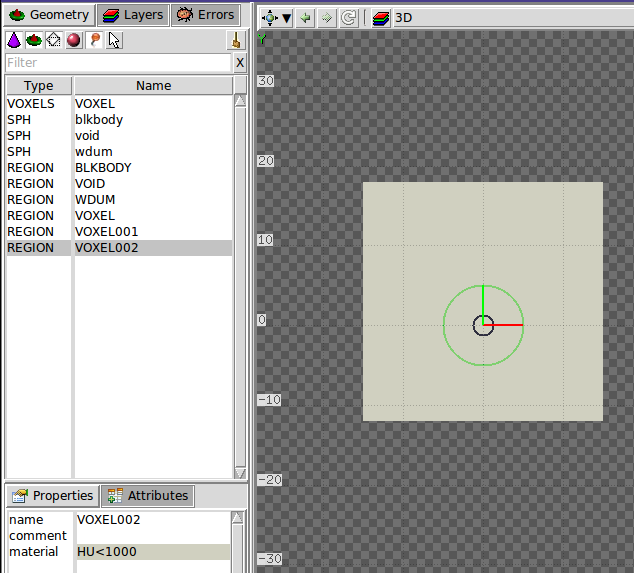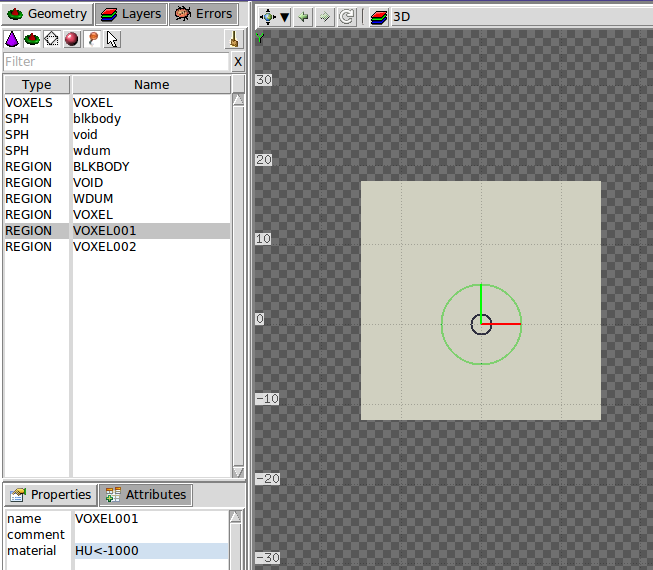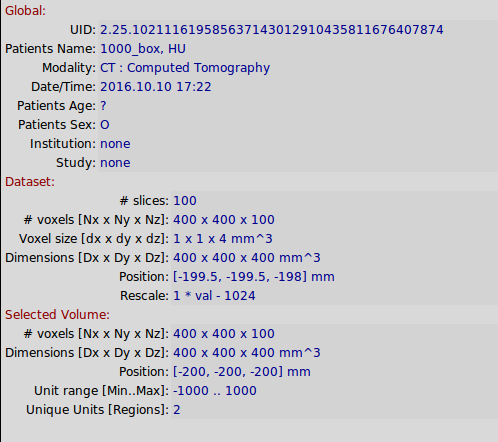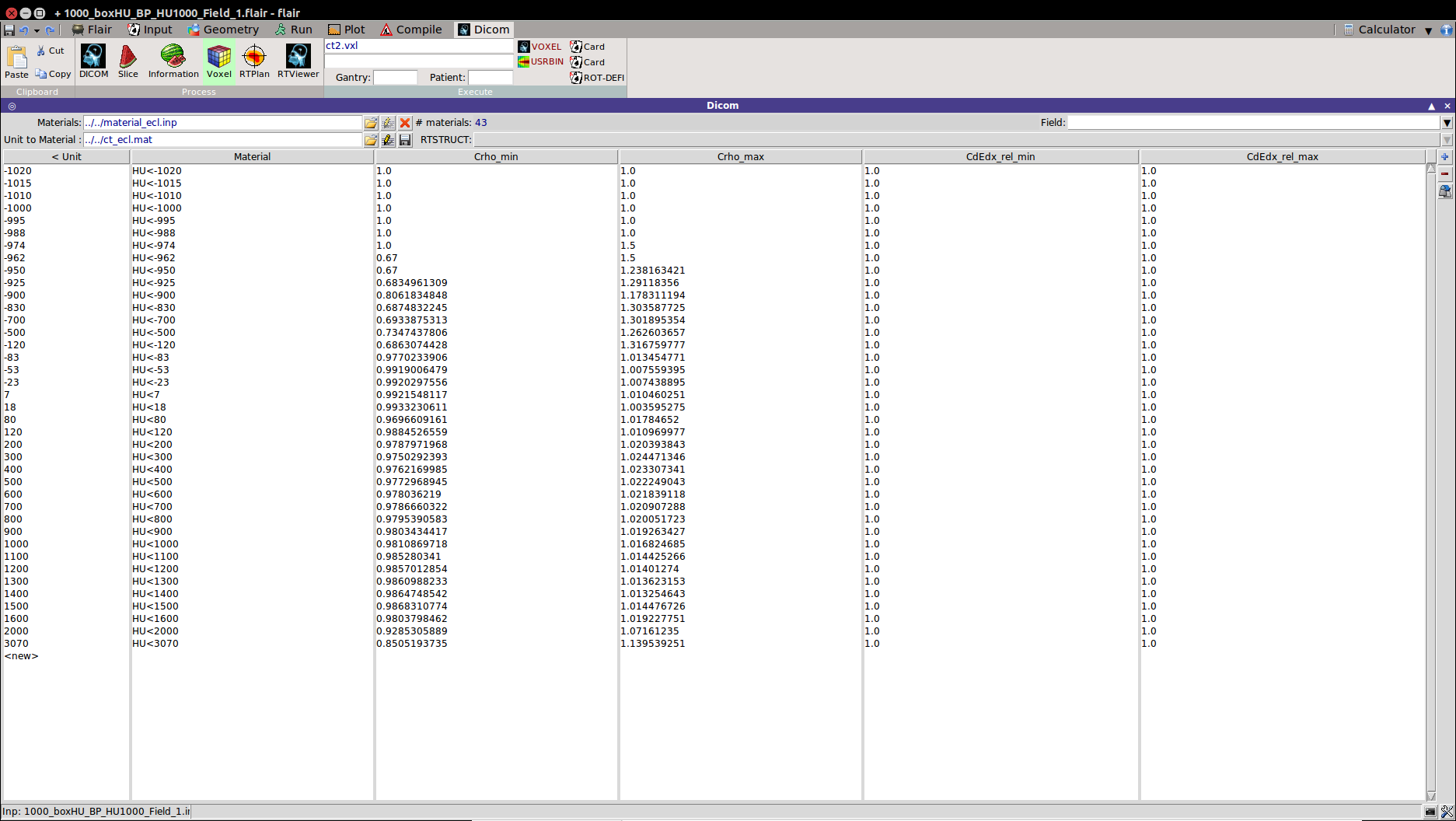Date: Fri, 14 Oct 2016 19:17:59 +0200
Dear FLUKA users,
I have two problems I want to address.
First, is there an error in the Flair Dicom/Voxel tab? The unit range on
the far left specifies Hounsfield units "less than" (<), however, when I
was using artificial CT-scans, I noticed that Flair applies materials
according to units of "less or equal" (<=). As an example, I have the
following defined:
< Unit Material Crho_min Crho_max
1000 HU<1000 0.9810 1.0168
1100 HU<1100 0.9852 1.0144
In my CT scan I have only two Hounsfield units, HU=1000 and HU=-1000. Using
the HU=1000 as an example, it should, according to Flair, be assigned the
material called HU<1100 considering that 999<HU1000<1100. However, the HU
of 1000 gets assigned the material HU<1000. This then means that the unit
specification in Flair should be (=<). I have also noticed that this was
the case in previous versions in Flair referring to for example the image
in the manual. I have also attached images of my voxel/geometry setup to
further illustrate the problem. The same also happens for my HU=-1000. It
gets assigned the material HU<-1000 specified with the unit <-1000, where
it really should be assigned the material HU<-1010.
Next problem. I really miss a proper explanation/documentation of the
stopping power calibration in the voxel tab. Performing the density
calibration (Crho_min and Crho_max) is straight forward and works
perfectly. I am however struggling with dE/dx calibration. First off, it is
specified that the dE/dx correction are relative corrections. Relative to
what? According to the manual, "dE/dx is applied relative to the correction
of density (negative WHAT(1) in CORRFACT)". However, I was under the
impression that if you perform the calibration in the .vxl file itself, you
don't need any separate CORRFACT cards? The manual also states:
"CdEdx_rel_min: relative correction factor on dE/dx for the minimum unit
in the range CdEdx_rel_max: relative correction factor on dE/dx
for the maximum unit in the range". So then I wonder, is the correction
applied to the density corrections? I.e. If I have rho = 1, and Crho_max =
1.5 and CdEdx_rel_max = 1.5, the effective density for the stopping power
will be 2.25?
Further, from the FLUKA course slides about medical application, there is a
sentence that states "FLAIR automatically appends the CORRFACT cards
calculated taking into account the calibration curves provided by the user
at the end of the .vxl file." So where are these CORRFACT cards?
And to add to all this, I have been playing around with the CdEdx_rel_min
and CdEdx_rel_max, just trying to change them to see if I can obtain some
difference in the simulated ranges for Bragg peaks. However, I can apply
whatever value to CdEdx_rel_min and CdEdx_rel_max, and still obtain
exactly the same curves. I've even tried to obtain an error in my
simulations by setting the CdEdx_rel_min and CdEdx_rel_max beyond the
range [2/3,3/2], however the simulation runs fine. I did the same thing for
the Crho_min and max, where I successfully obtained an error. So it seems
that FLUKA doesn't even take into account my input to CdEdx_rel_min and
CdEdx_rel_max. On the other hand, I am perfectly able to apply corrections
using regular CORRFACT cards. Can someone please explain thoroughly how to
properly use CdEdx_rel_min and CdEdx_rel_max?
Thank you!
--- *Lars Fredrik Fjæra*
__________________________________________________________________________
You can manage unsubscription from this mailing list at https://www.fluka.org/fluka.php?id=acc_info

(image/png attachment: HU_1000.png)

(image/png attachment: HU-1000.png)

(image/png attachment: Information-tab.png)

(image/png attachment: Voxel-tab.png)